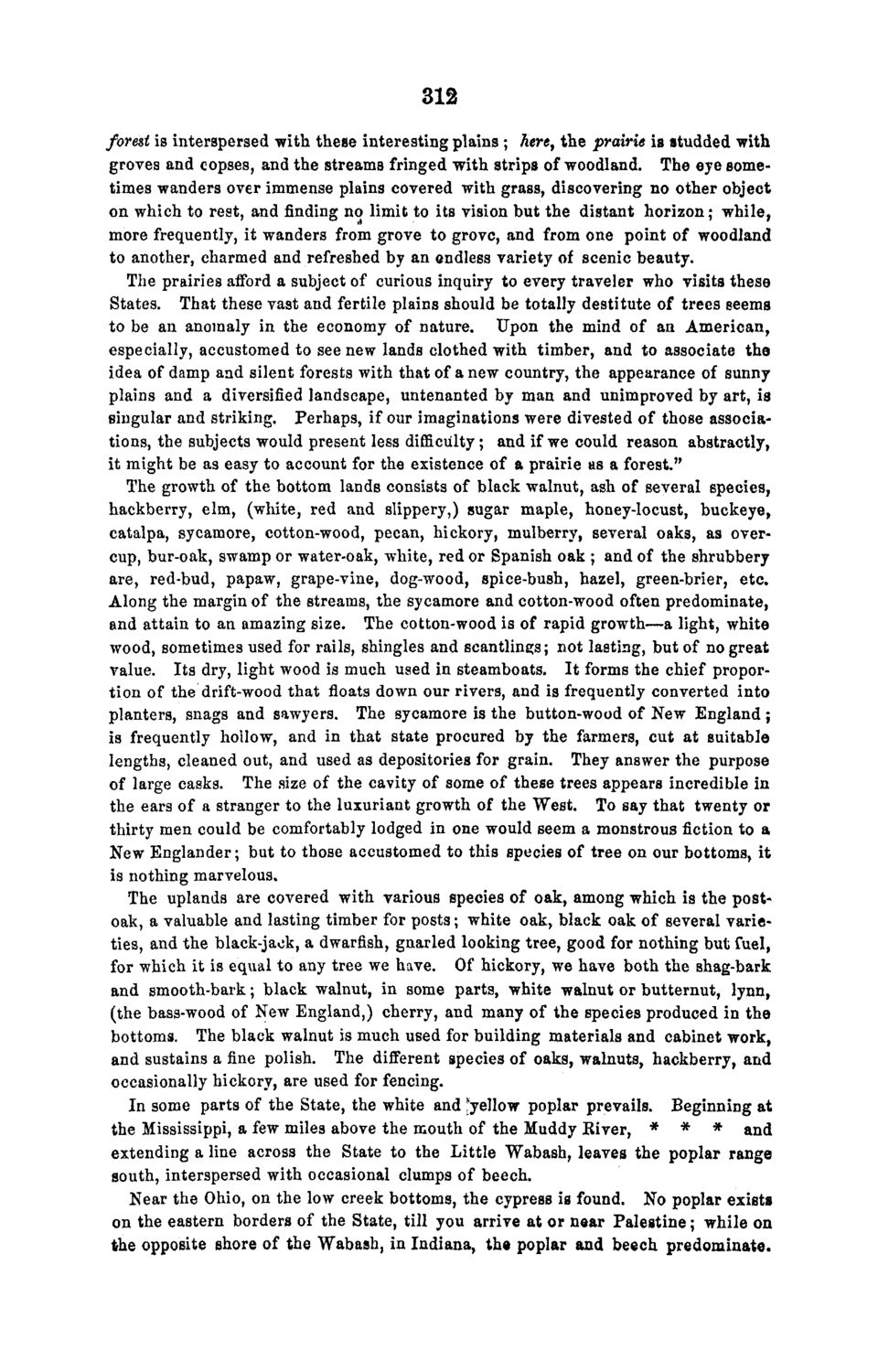| |
| |
Caption: Board of Trustees Minutes - 1868
This is a reduced-resolution page image for fast online browsing.

EXTRACTED TEXT FROM PAGE:
312 forest is interspersed with these interesting plains ; here, the prairie is studded with groves and copses, and the streams fringed with strips of woodland. The eye sometimes wanders over immense plains covered with grass, discovering no other object on which to rest, and finding no limit to its vision but the distant horizon; while, more frequently, it wanders from grove to grove, and from one point of woodland to another, charmed and refreshed by an endless variety of scenic beauty. The prairies afford a subject of curious inquiry to every traveler who visits these States. That these vast and fertile plains should be totally destitute of trees seems to be an anomaly in the economy of nature. Upon the mind of an American, especially, accustomed to see new lands clothed with timber, and to associate the idea of damp and silent forests with that of a new country, the appearance of sunny plains and a diversified landscape, untenanted by man and unimproved by art, is singular and striking. Perhaps, if our imaginations were divested of those associations, the subjects would present less difficulty; and if we could reason abstractly, it might be as easy to account for the existence of a prairie as a forest." The growth of the bottom lands consists of black walnut, ash of several species, hackberry, elm, (white, red and slippery,) sugar maple, honey-locust, buckeye, catalpa, sycamore, cotton-wood, pecan, hickory, mulberry, several oaks, as overcup, bur-oak, swamp or water-oak, white, red or Spanish oak ; and of the shrubbery are, red-bud, papaw, grape-vine, dog-wood, spice-bush, hazel, green-brier, etc. Along the margin of the streams, the sycamore and cotton-wood often predominate, and attain to an amazing size. The cotton-wood is of rapid growth—a light, white wood, sometimes used for rails, shingles and scantlings; not lasting, but of no great value. Its dry, light wood is much used in steamboats. It forms the chief proportion of the drift-wood that floats down our rivers, and is frequently converted into planters, snags and sawyers. The sycamore is the button-wood of New England; is frequently hollow, and in that state procured by the farmers, cut at suitable lengths, cleaned out, and used as depositories for grain. They answer the purpose of large casks. The size of the cavity of some of these trees appears incredible in the ears of a stranger to the luxuriant growth of the West. To say that twenty or thirty men could be comfortably lodged in one would seem a monstrous fiction to a New Englander; but to those accustomed to this species of tree on our bottoms, it is nothing marvelous. The uplands are covered with various species of oak, among which is the postoak, a valuable and lasting timber for posts; white oak, black oak of several varieties, and the black-jack, a dwarfish, gnarled looking tree, good for nothing but fuel, for which it is equal to any tree we have. Of hickory, we have both the shag-bark and smooth-bark; black walnut, in some parts, white walnut or butternut, lynn, (the bass-wood of New England,) cherry, and many of the species produced in the bottoms. The black walnut is much used for building materials and cabinet work, and sustains a fine polish. The different species of oaks, walnuts, hackberry, and occasionally hickory, are used for fencing. In some parts of the State, the white and [yellow poplar prevails. Beginning at the Mississippi, a few miles above the mouth of the Muddy River, * * * and extending a line across the State to the Little Wabash, leaves the poplar range south, interspersed with occasional clumps of beech. Near the Ohio, on the low creek bottoms, the cypress is found. No poplar exists on the eastern borders of the State, till you arrive at or near Palestine; while on the opposite shore of the Wabash, in Indiana, the poplar and beech predominate.
| |